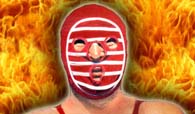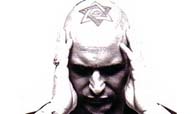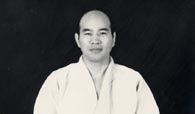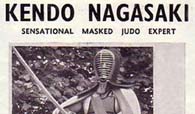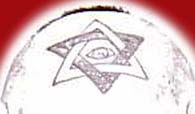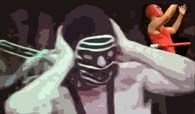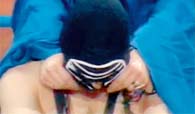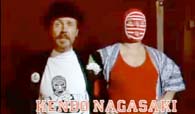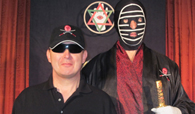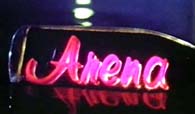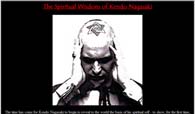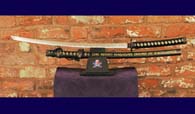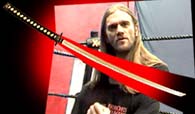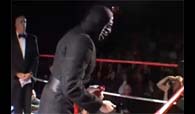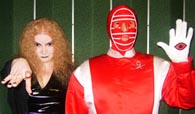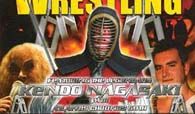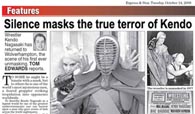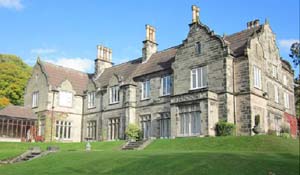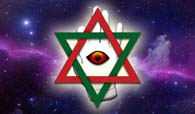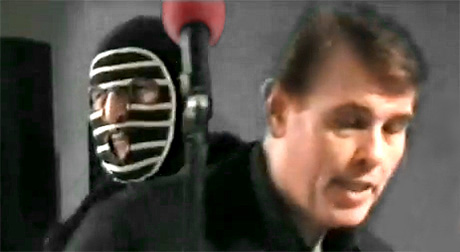
With Kendo Nagasaki’s spectacular appearances...
...having become increasingly scarce since the end the ITV wrestling days, old red eyes made a brief appearance on the small screen in Granada Television’s 1998 homage to British wrestling, "Everything Stopped At 4 O'clock". The show was based on Simon Garfield’s widely lauded book “The Wrestling”, which was a warts-and-all look behind the scenes at the heyday of the sport in Britain. Lloyd Ryan as usual answered the questions whilst Kendo sat in complete silence, as he had done ever since he first entered a wrestling ring all those years ago.
Many fans of the old days had been asking, "what has happened to Nagasaki?" Rumours and half-truths abounded in wrestling circles, but it was generally understood that he had disappeared into the night for the last time, that the great wrestling warrior Nagasaki was no more...
...that was until the long-running telephone information line WrestleCall conducted a Millennium poll to find out who the greatest British wrestler of all time was. Many people thought it was a foregone conclusion that such greats as Dynamite Kid, Davey Boy Smith and Mark Rocco would clinch the title. The final result surprised everyone: Kendo Nagasaki was officially the Wrestler Of The Millennium.
In response to this accolade, it was announced that plans were being laid for him to thank the fans by accepting the trophy at three leading venues: the Fairfield Hall in Croydon, the Victoria Hall in Hanley, and Colston Hall in Bristol - all these venues scenes of some of Kendo’s greatest triumphs and most controversial victories. The presentations took place in May 2000, and fans turned out in their hundreds to see Nagasaki in a wrestling hall once more, but as ever with Kendo things weren’t quite so simple - he could not resist getting involved in the grappling game once more!
At Hanley, local radio presenter Legendary Lonnie (himself a wrestling manager in days gone by) stood waiting to present the award. It seemed that Nagasaki hadn’t turned up, and Darren Walsh was put forward to accept the award on his behalf. Lloyd Ryan turned on Walsh, which resulted in a strong verbal barrage from both sides, and suddenly Kendo leaped into the ring and threw salt in Walsh’s eyes, before slamming him and throwing the young heavyweight out of the ring. As the red eyes stared out, the crowd went crazy - the Kendo of old had emerged! Nagasaki incited the crowd, bowing and generally acknowledging his acclaim and victorious reputation.
The intervening years had done nothing to detract from Kendo's familiarly ferocious nature. He had gone from a weight of around 18 stones in the early 90’s to some 15 stones, the weight loss resulting in some wrestling observers claiming that this was not the original Nagasaki but an imposter. These people seemed to have failed to notice the missing index finger, which is the one true giveaway in any question of Kendo’s identity; this was without doubt the Nagasaki of old, and little did fans know that the career of the legend was not over yet. Similar controversy followed the presentations in Croydon and Bristol, and to the fans' delight, before long Lloyd Ryan had lined up a series of tag team matches featuring the masked one.
One man desperate to have a crack at Kendo again was Marty Jones. For a long time Marty had been one of Kendo's most bitter rivals, and in the tag clashes that followed the old rivalry was rekindled. Drew MacDonald partnered Kendo in a number of contests, the team reviving the sort of atmosphere that had been present in the glory days of the 60’s and 70’s. Children who had grown up without ever seeing Kendo on television, a generation addicted to the WWF, became fascinated by the impressive masked man. The stage doors of the venues where Kendo had chosen to make these appearances were besieged by fans young and old, who wanted an autograph of the red devil. Little had anyone suspected during those quiet years that Kendo would again contact his Samurai ancestors, which would act as the inspiration for a year 2000 Millennium campaign that would continue the havoc and violence where it had left off some seven years before.
With the turn of the millennium, Nagasaki was spending increasing amounts of time concentrating on spiritual matters. Ever since he had begun healing during the 1970s, he had always planned to formalise a Nagasaki "way of being", the study of which would bring healing and health, strength and success, and wisdom and understanding of things beyond life. His hypno-therapeutic techniques had revealed the secrets of past lives to those lucky enough to experience it, and he was always asked for more such insights. The teachings that Nagasaki had planned were now being sought out by those eager to understand more, so an increased commitment to spiritual matters had become inevitable.
The future remained shrouded in an intrigue typical of Nagasaki, but it seemed that there would be much more to come, both in the wrestling ring and mystically.

